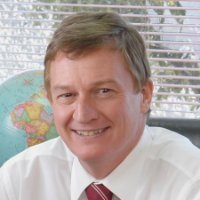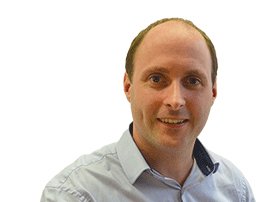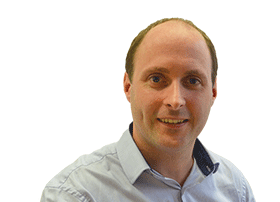
Tony Henshaw

Andy Cartland
Andy Cartland, founder and MD at Acre, the market leader in sustainability and safety recruitment, speaks to Tony Henshaw, chief sustainability officer at multinational conglomerate, Aditya Birla Group, about the need for systems thinking in safety.
Andy: Your title is chief sustainability officer. How big a role does safety play in your strategy?
Tony: At Aditya Birla, our aim is to build sustainable businesses. We use safety to help us to understand how to build capable management systems that give us the financial returns we seek with zero harm, minimised impacts and/or exposure. Safety is our starting point because it is the first mind-set change where not all investments mean an immediate financial payback.
Andy: You started your career in engineering, is this where the importance of safety in the workplace first took root?
Tony: As an engineer, I see the world as a series of systems, both simple and complex. When I moved into management, it seemed logical to me that if a management team could not build a management system capable of keeping their own people safe, then their ability to manage more complex systems was in question.
In systems thinking, you look at the big picture and seek to understand the whole system, not by interrogating each minute element, but by understanding the interrelationships between parts of the system. Keeping people safe is a test of management’s ability to build a business management system that doesn’t also harm their most valuable resource – their people.
Andy: How can this approach help in terms of improving safety in the workplace?
Tony: You need to see the system as an interaction of people, assets and processes. Imagine a person driving. To minimise the risk of an accident, the car must be maintained, the driver must be trained to be competent, and the rules of the road must be followed and evolved depending on the weather and road conditions. Most accidents are caused by failure(s) in one of these three areas. To build a system to be capable of delivering a safe working environment is not easy, and the job is never over because all systems evolve and change over time, so the focus needs to be on continual review and improvement.
Andy: It’s tempting when thinking about systems to think about machines and automation, but people must play a key role too?
Tony: Absolutely. People undoubtedly play the most important role, because as humans we are capable of exercising judgment and making decisions. However, that asset can also become a liability, because compared to a machine, humans are far more likely to make mistakes and our capability changes from day to day depending on how we feel.
The big difference between for example, a machine led quality system and a people led safety system, is that it is much easier to make machines capable. People on the other hand need leadership and motivation to reduce the inherent variation.
Andy: So do you believe that we need more automation of safety procedures to reduce human error?
Tony: As we said, the system is an interaction of people, assets and processes and so if you add more automation, you likely reduce the human component. In areas such as aviation this has improved the safety record of aircraft.
Andy: Taking a systems approach, how do you design a culture of safety where people can not only identify risk, but take action to mitigate it too?
Tony: To make the system capable of producing zero harm, it is important to make sure each component is capable of producing the necessary performance. For the human side, training and leadership are vital components. Training to raise capability, and leadership to increase consistency of performance. If we marry capable people with good processes we remove variation and so improve performance.
Andy: Do you think safety is high enough on the radar of other CSOs? There’s sometimes a sense that it gets forgotten in the discussion around responsible and sustainable business.
Tony: Possibly, but for me safety is the first key to building a sustainable business as it creates a mindset change; if you cannot be responsible for and keep your people from harm then how can you manage other issues such as the impacts of climate change and biodiversity loss? Once managers master the ability to create capable systems then the same techniques can easily be applied to pollution, waste, water and energy management.
Andy: What advice would you give to someone with ambitions to become a CSO?
Tony: Sustainability has to be led from the top by the CEO, so to communicate effectively, a CSO must understand business management systems. They must also understand how they can influence the development of those systems in order to create a company that is capable of being sustainable, even when external circumstances change and challenge the stability of the company.
If everyone improves their performance so as to help mitigate external problems such as climate change, then it will be much easier for us all to adapt to the changes we create in the planet.
 Tony Henshaw is chief sustainability officer at Aditya Birla Group. A Chartered Electrical Engineer, Tony also holds an MBA from Manchester Business School. After spending his early career building subway trains in Asia and Europe, Tony first specialised in introducing Japanese management techniques into manufacturing companies before joining Transredes – Bolivia’s oil and gas pipeline.
Tony Henshaw is chief sustainability officer at Aditya Birla Group. A Chartered Electrical Engineer, Tony also holds an MBA from Manchester Business School. After spending his early career building subway trains in Asia and Europe, Tony first specialised in introducing Japanese management techniques into manufacturing companies before joining Transredes – Bolivia’s oil and gas pipeline.
Following a major oil spill and eight months as incident commander in charge of the clean up, Tony created a new role for himself as vice president of health, safety, environment and social affairs. Transredes went on to become the first company in Bolivia to have an integrated Business Management System certified to ISO 9001, 14001 and OSHAS 18001 in 2003.
As vice president of sustainability for CEMEX, Tony was instrumental in developing the company’s sustainability model and strategy whilst improving stakeholder engagement through new NGO partnerships based around the company’s Conservation Book project.
 Andy Cartland is founder and MD at Acre, the market leader in sustainability and safety recruitment for over a decade. Andy is also a trustee for Global Action Plan a charity that brings people together and inspires them to take practical environmental action, and an advisor to social impact consultancy, Uscreates.
Andy Cartland is founder and MD at Acre, the market leader in sustainability and safety recruitment for over a decade. Andy is also a trustee for Global Action Plan a charity that brings people together and inspires them to take practical environmental action, and an advisor to social impact consultancy, Uscreates.
The Safety Conversation Podcast: Listen now!
The Safety Conversation with SHP (previously the Safety and Health Podcast) aims to bring you the latest news, insights and legislation updates in the form of interviews, discussions and panel debates from leading figures within the profession.
Find us on Apple Podcasts, Spotify and Google Podcasts, subscribe and join the conversation today!



 Andy Cartland is founder and MD at
Andy Cartland is founder and MD at 